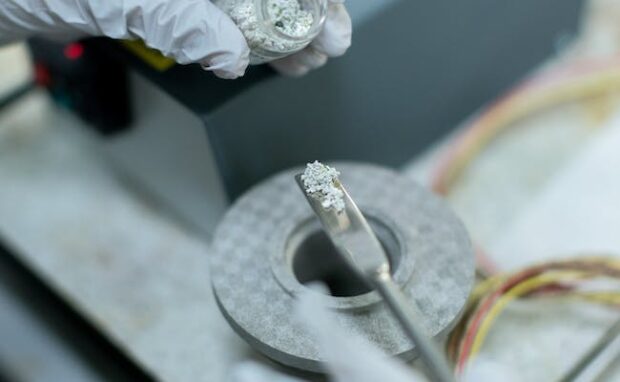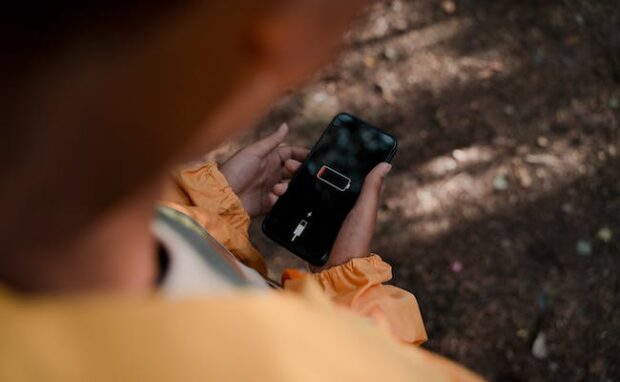New fuel cell runs on earth’s natural dirt
In a groundbreaking scientific feat, researchers at Northwestern University have transformed the very ground beneath our feet into a powerful energy source. Their pioneering fuel cell taps into an unlikely ally – the microbes dwelling in soil – to generate electricity.
This innovative approach not only marks a significant departure from previous microbial fuel cell (MFC) designs, which were hampered by low power and performance issues, but also heralds a new era in sustainable energy.
Our world is expanding its digitalization, meaning we will deploy more electronic gadgets for more industries. However, building them from conventional materials could exacerbate climate change and pollution. Fortunately, the bright minds at Northwestern may have found one of the solutions to this futuristic problem.
How does this unique fuel cell work?

The Northwestern University team was determined to ensure their latest invention functioned effectively in both wet and dry conditions while generating reliable, usable power. To achieve this, they developed and tested four distinct prototypes.
After nine months of rigorous testing and evaluation, they identified a promising design. This design deviated from traditional microbial fuel cells by having its anode and cathode positioned perpendicularly to each other.
This seemingly mundane adjustment allowed the team to put the power-generating components in the dirt while keeping a cap above ground to maintain oxygenation. “Although the entire device is buried, the vertical design ensures that the top end is flush with the ground’s surface,” the scientists explain.
“A 3D-printed cap rests on top of the device to prevent debris from falling inside. And a hole on top and an empty air chamber running alongside the cathode enable consistent airflow,” they added.
The experts also covered the fuel cell with a waterproof material to absorb oxygen during a flood. As a result, they created a working MFC that lasted 1,205 times than similar designs and produced 68 times as much energy to power its sensor.
You may also like: AI designs unique robots in seconds
The researchers said the excess electricity could run a small, wireless antenna that could relay its readings to farmers far away. Still, they admitted that creating an MFC is nothing new.
Making one that can function in wet and dry conditions has stumped researchers for decades. The DeBrief says MFCs need to stay hydrated and oxygenated to work properly.
“Although MFCs have existed as a concept for more than a century, their unreliable performance and low output power have stymied efforts to make practical use of them, especially in low-moisture conditions,” Northwestern alumnus Bill Yen said.
Another green energy solution

The previous fuel cell uses energy from the ground, but a similar solution from Italy takes sustainability further. Its experts from the Istituto Italiano di Tecnologia created a battery that you can eat!
To understand this, let’s briefly look at how a battery operates, drawing on information from an Inquirer Tech article. Batteries convert stored chemical energy into electrical energy by transferring electrons from one terminal electrode (the anode) to another (the cathode).
Remarkably, these innovative Italian batteries can be consumed as a snack once their energy is depleted. These biodegradable and edible batteries could significantly reduce the global environmental impact of battery disposal.
Most batteries have chemicals like manganese dioxide, zing, and cobalt dioxide, which could contaminate the soil and nearby animals. On the other hand, the edible battery uses vitamin B2 or riboflavin for its anode.
This nutrient is typically in beef, dairy, eggs, cereals, and mushrooms. Also, the cathode consisted of quercetin, a supplement from capers and red onions.
You may also like: NASA laser comms test succeeds ‘first light’
The electrolyte is a mix of activated charcoal and a water-based solution. The former is a common black food coloring and medicine component. “The separator, needed in every battery to avoid short circuits, was made from nori seaweed, the kind found in sushi,” Istituto Italiano di Tecnologia researcher Mario Caironi said.
“In particular, we found a suitable edible material for every single component that is necessary to realize a working battery,” he added. Moreover, he explained the edible energy source operates at 0.65 volts (V), a safe voltage for ingestion.
The battery provides tens of microamperes (μA) for over 10 minutes. “Albeit limited in capacity, what we demonstrated is already enough to supply power to small electronic devices, such as low-power LEDs, for a limited time,” Caironi stated.
Essential farming tool
Northwestern University experts created a fuel cell that uses dirt as an energy source. Soon, it could become an essential farming tool.
It could power sensors that monitor crops to significantly boost yields. Soon, it may help reduce our dependence on fossil fuels, ensuring our next technological age is sustainable.
Learn more about this unique fuel cell from the Association for Computing Machinery. Check out the latest digital tips and trends at Inquirer Tech.